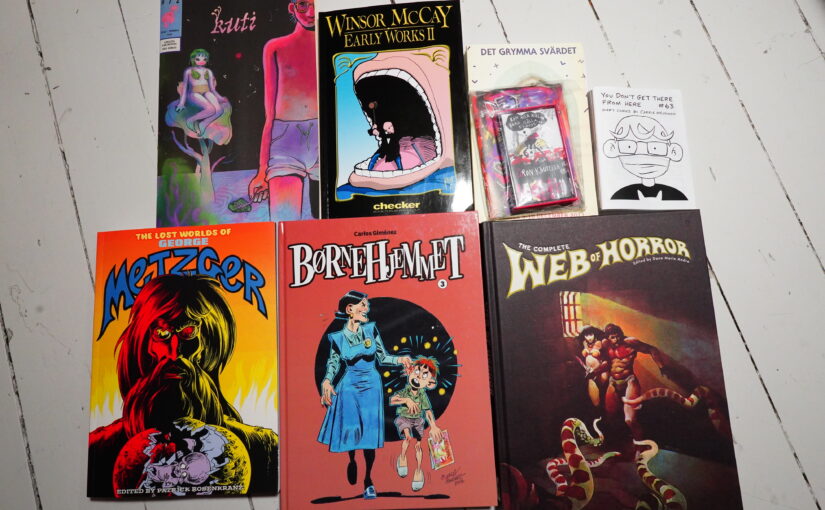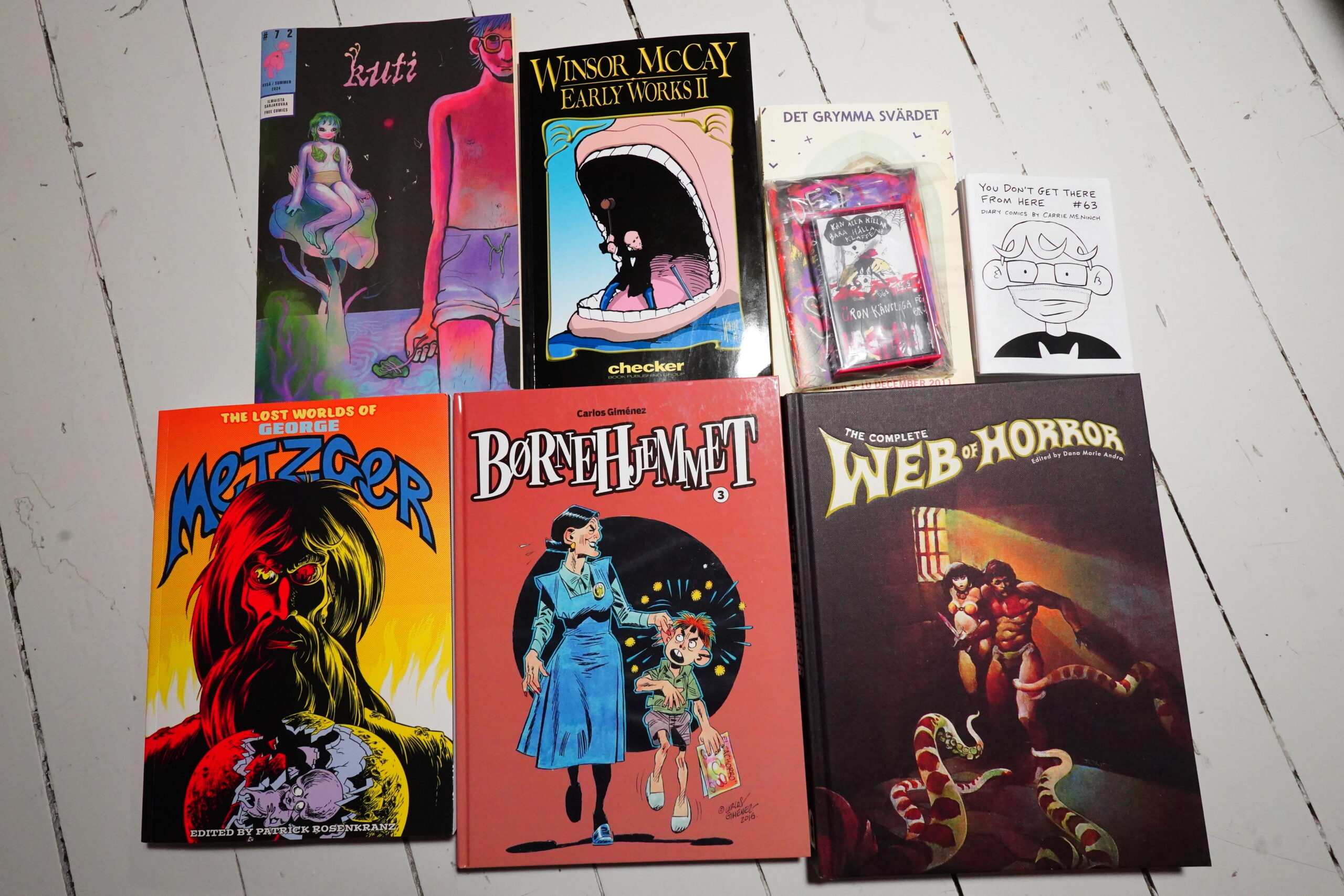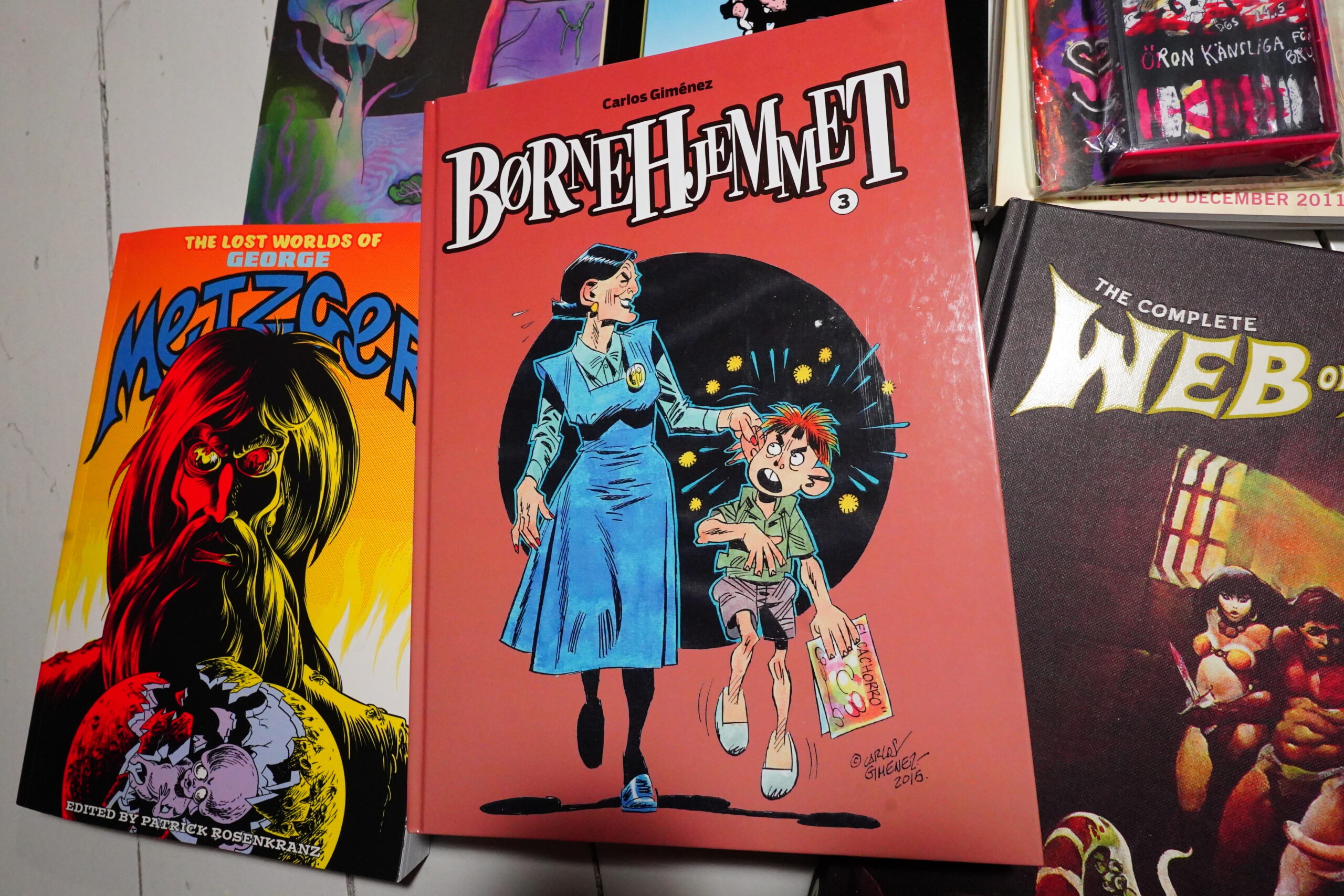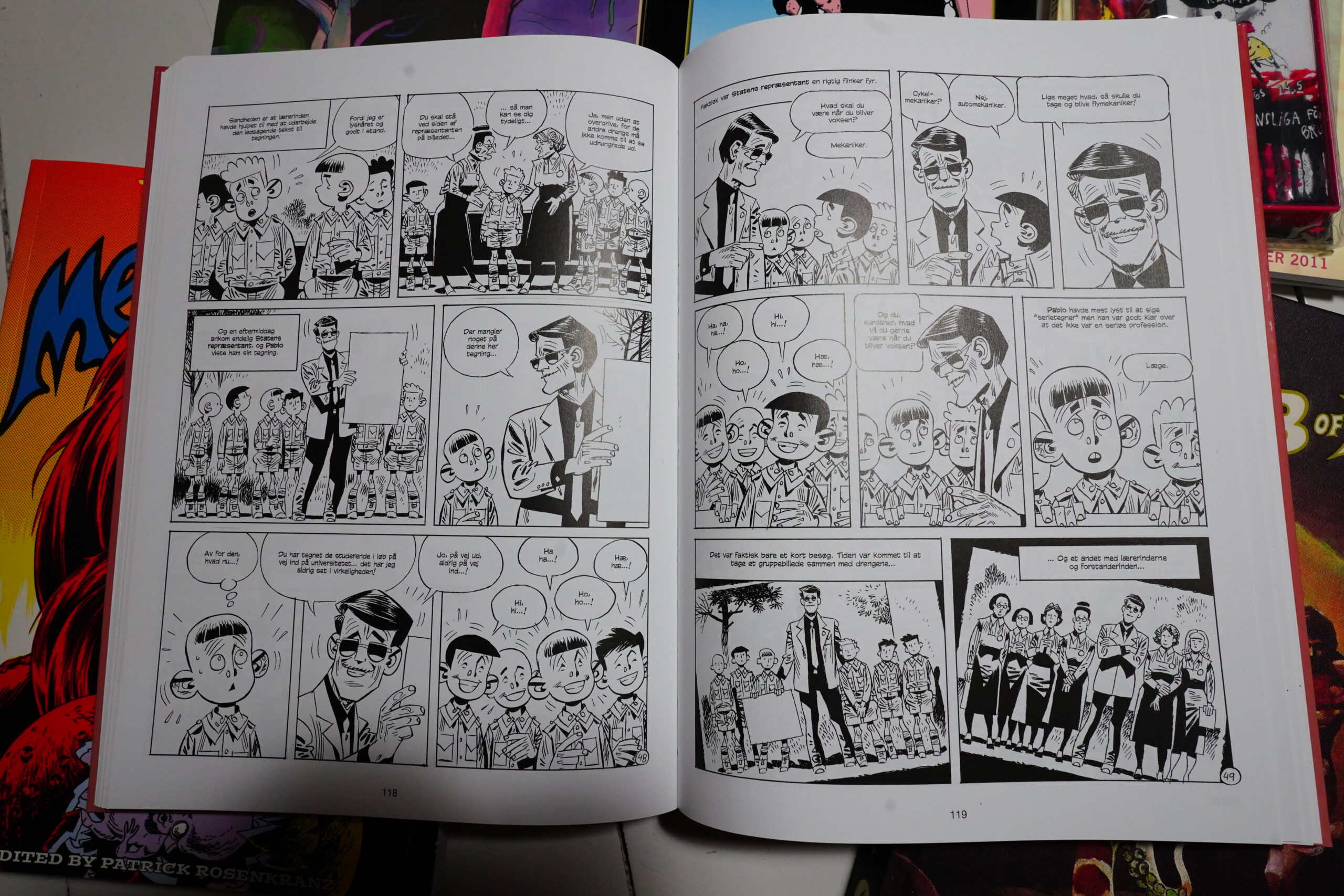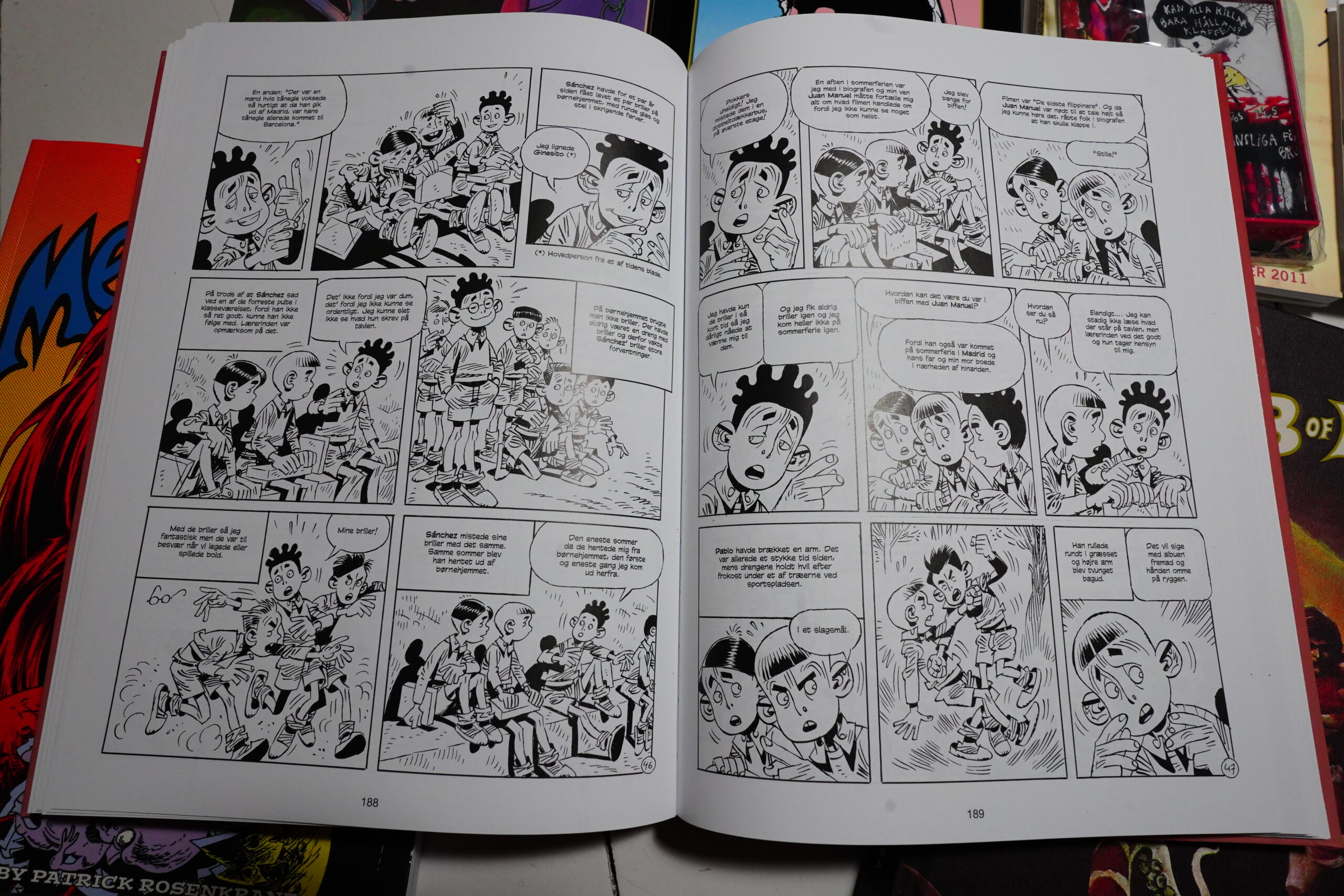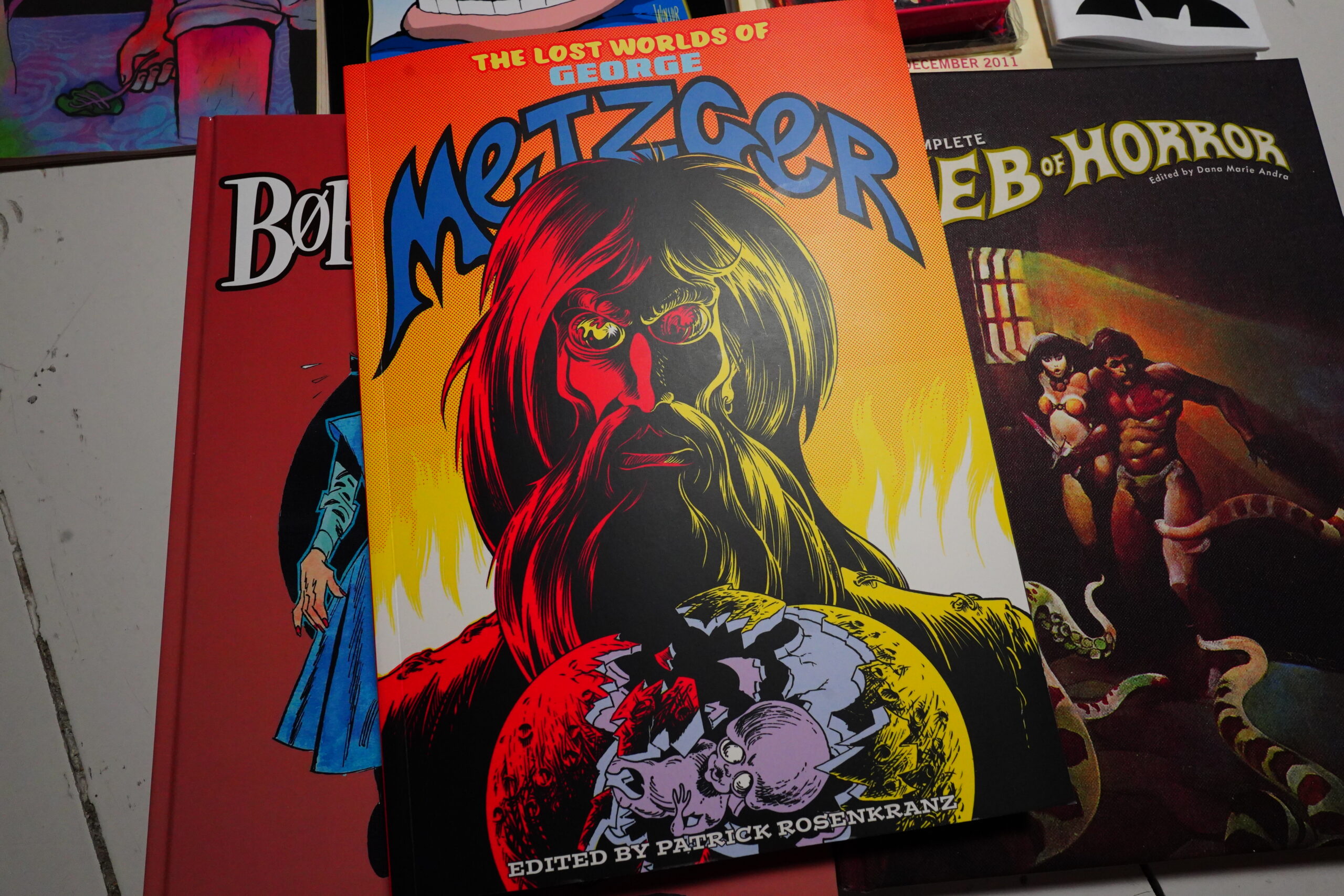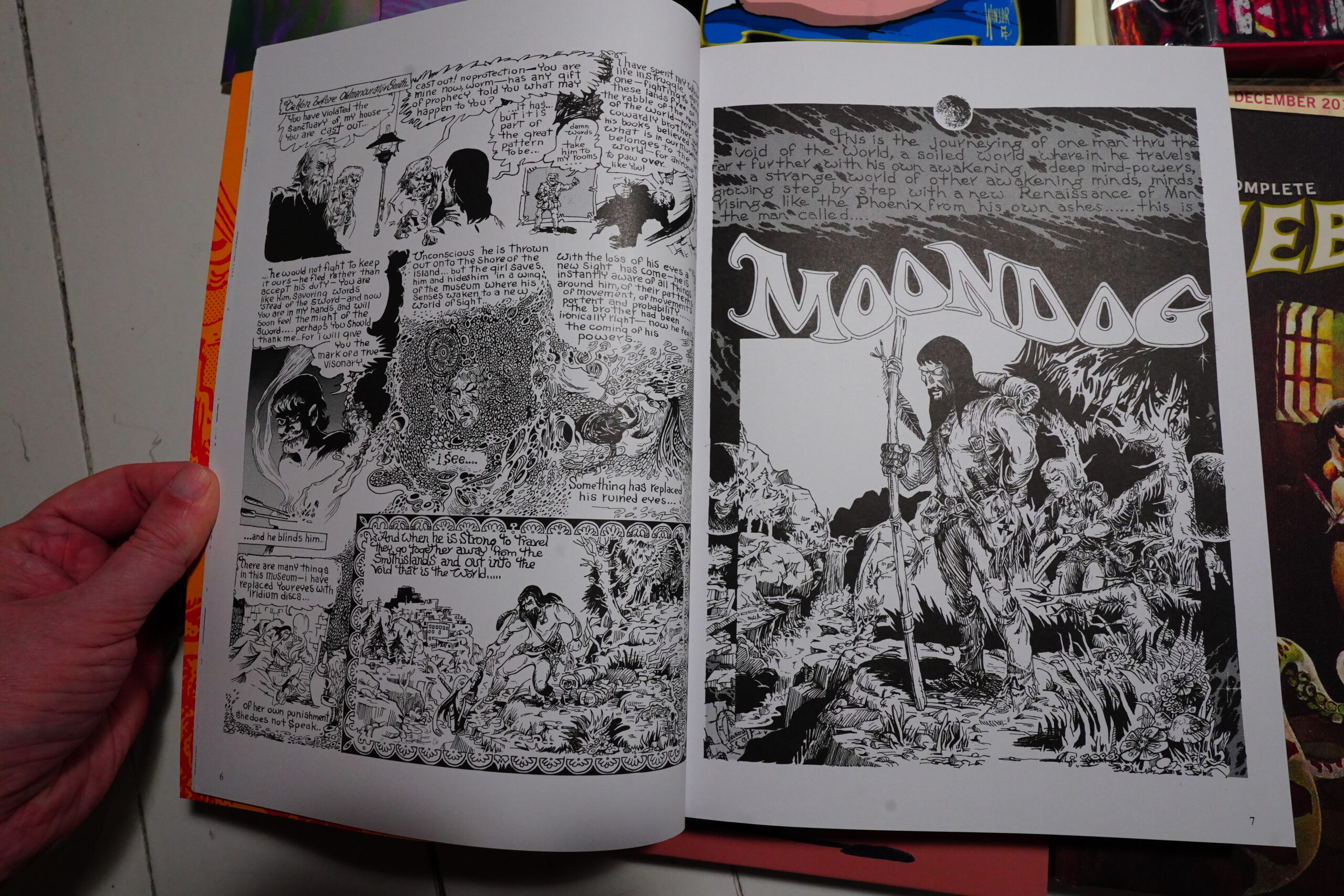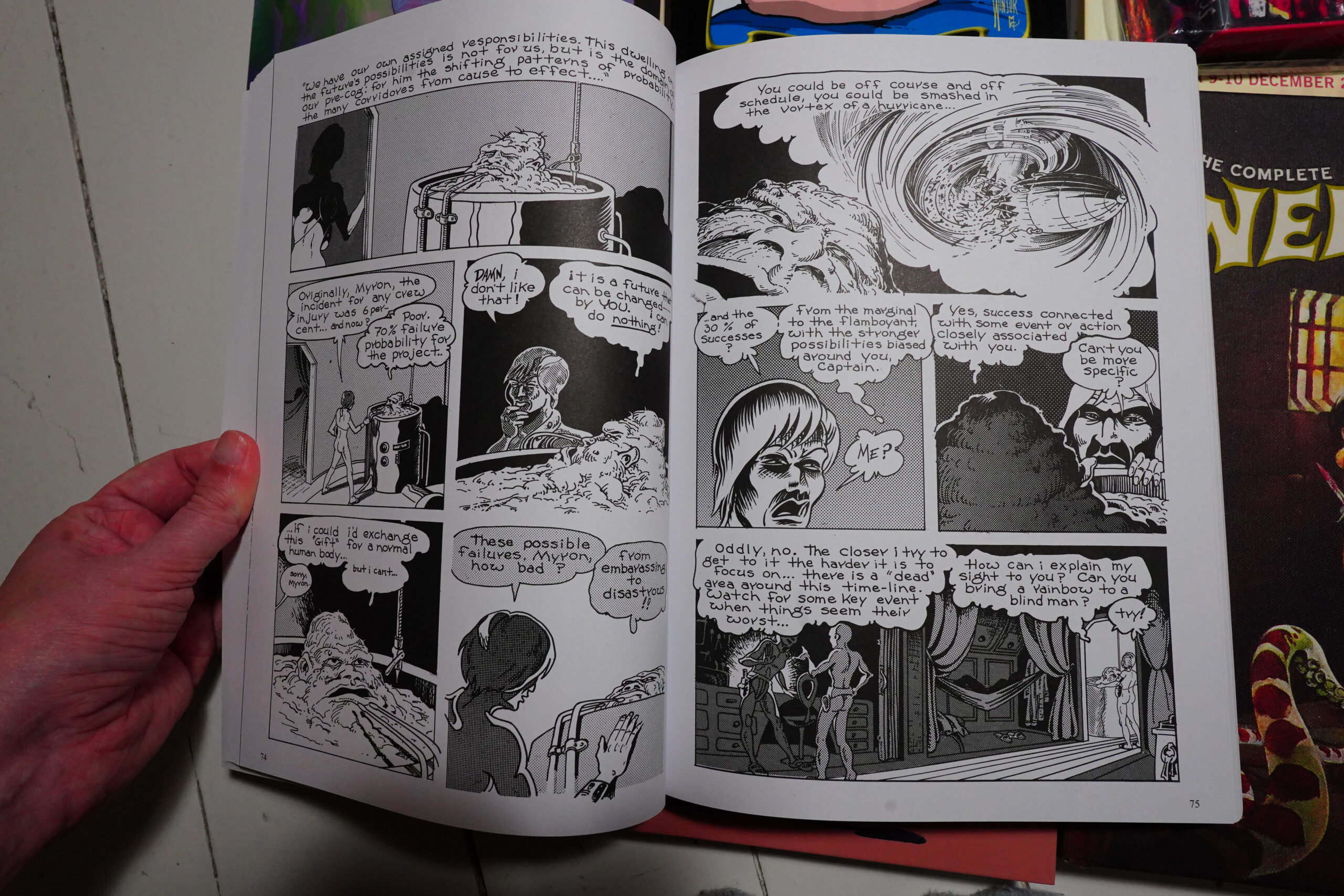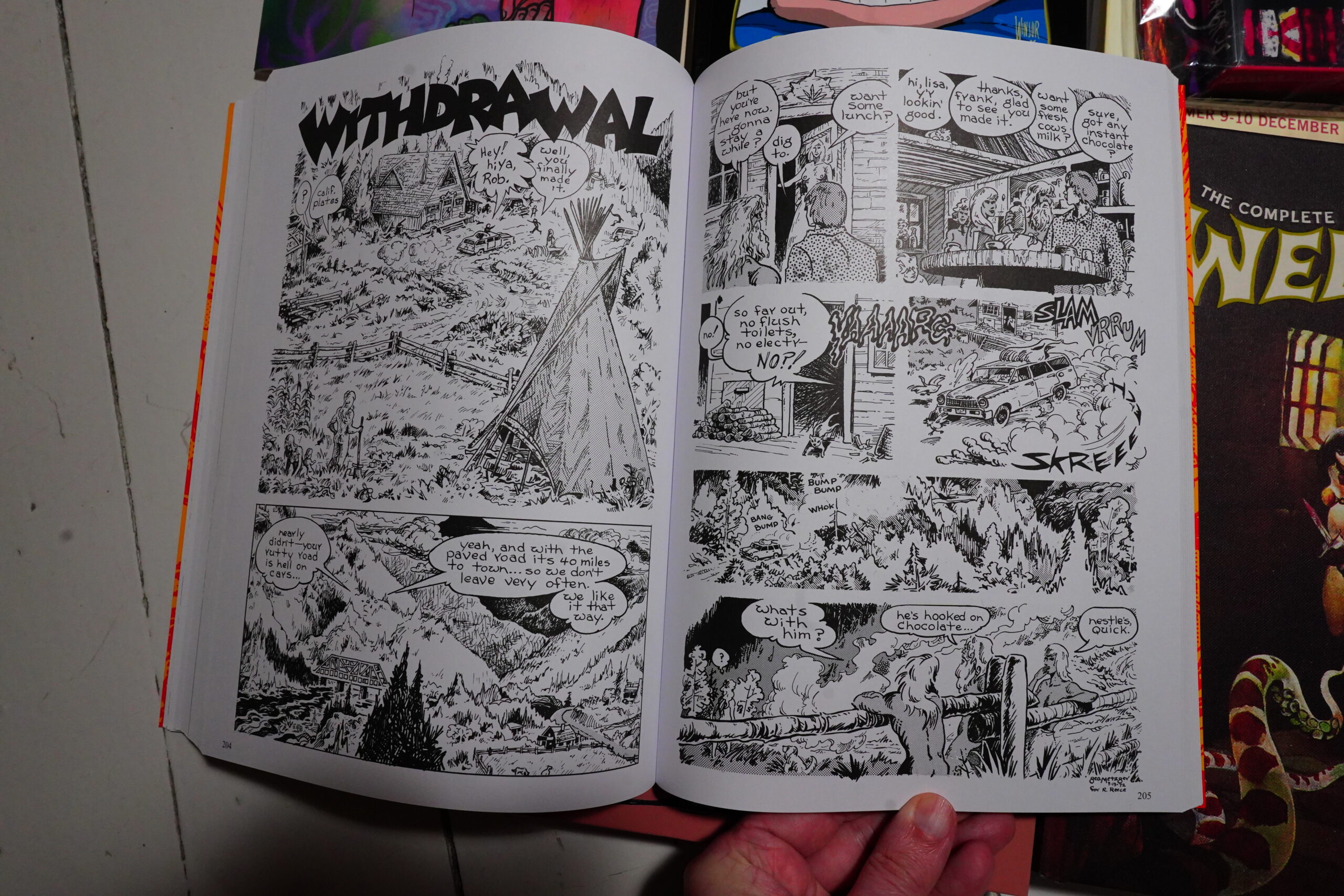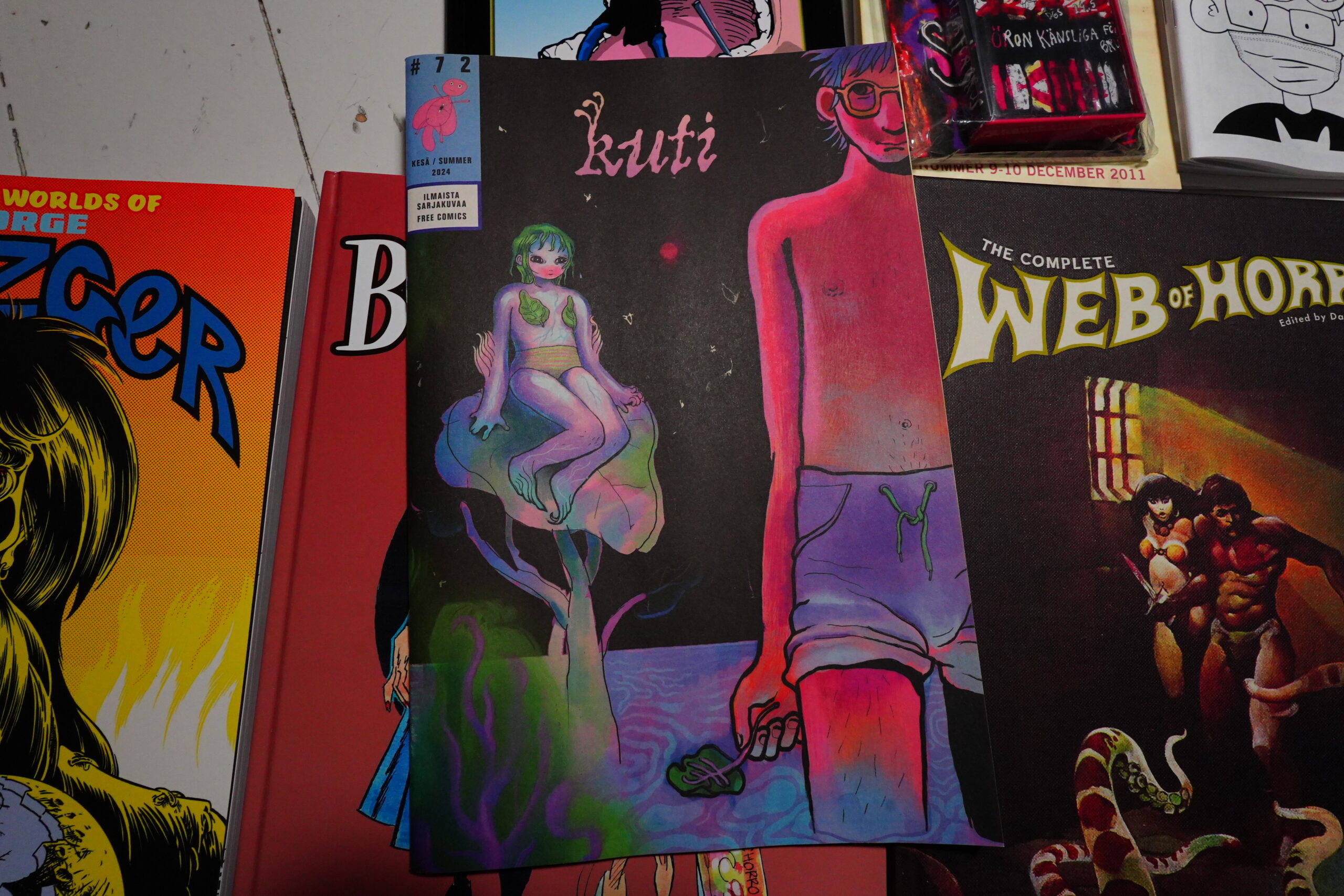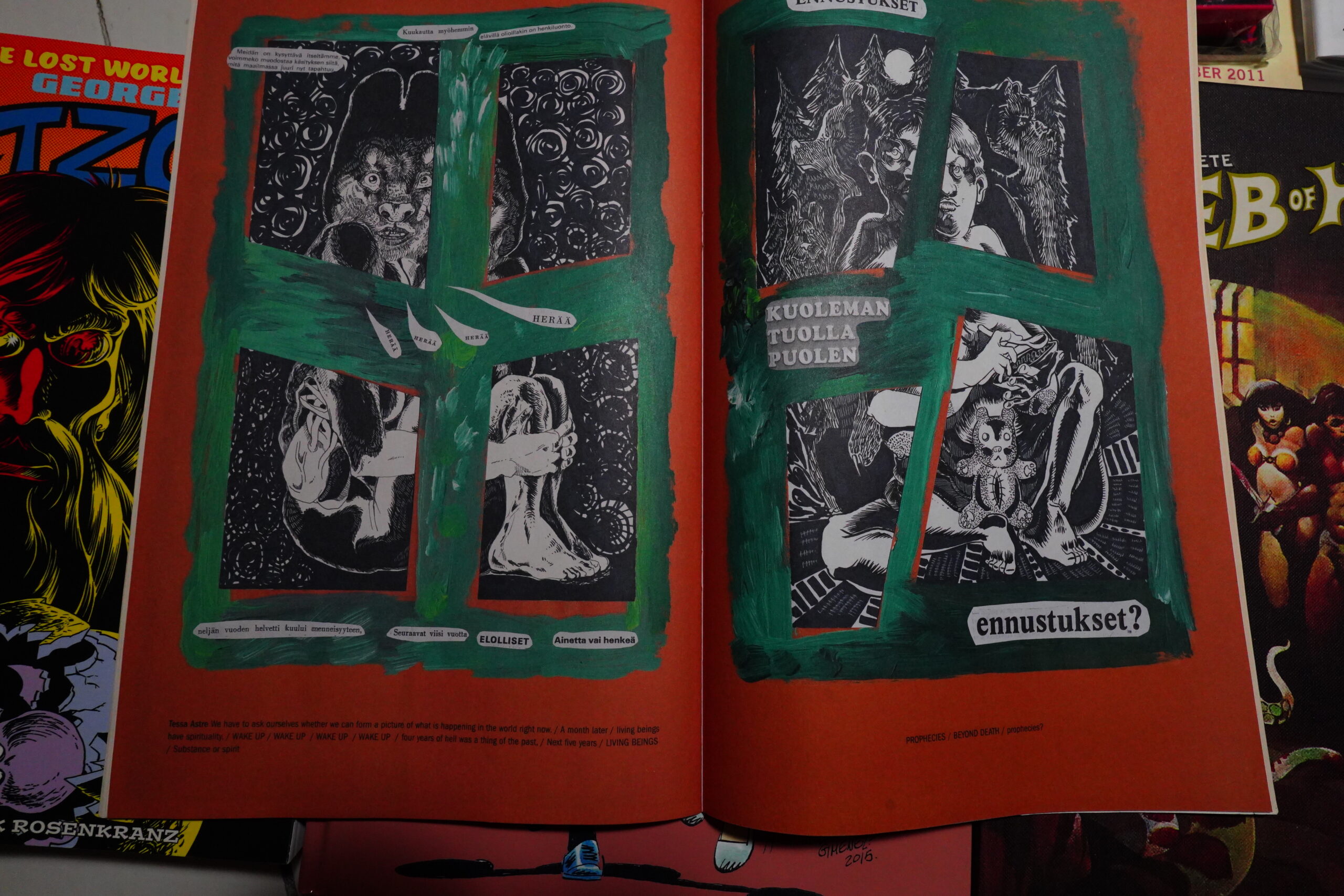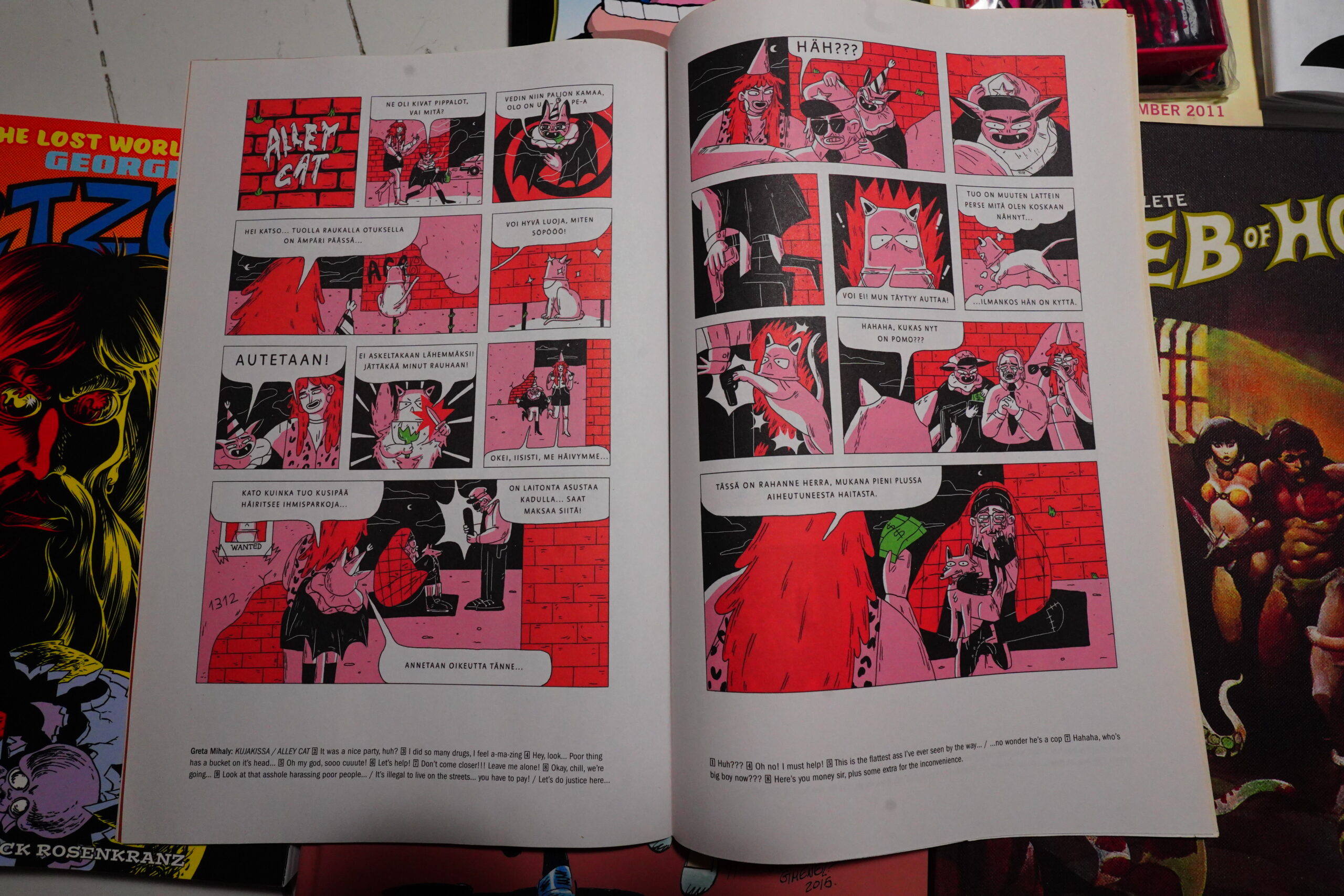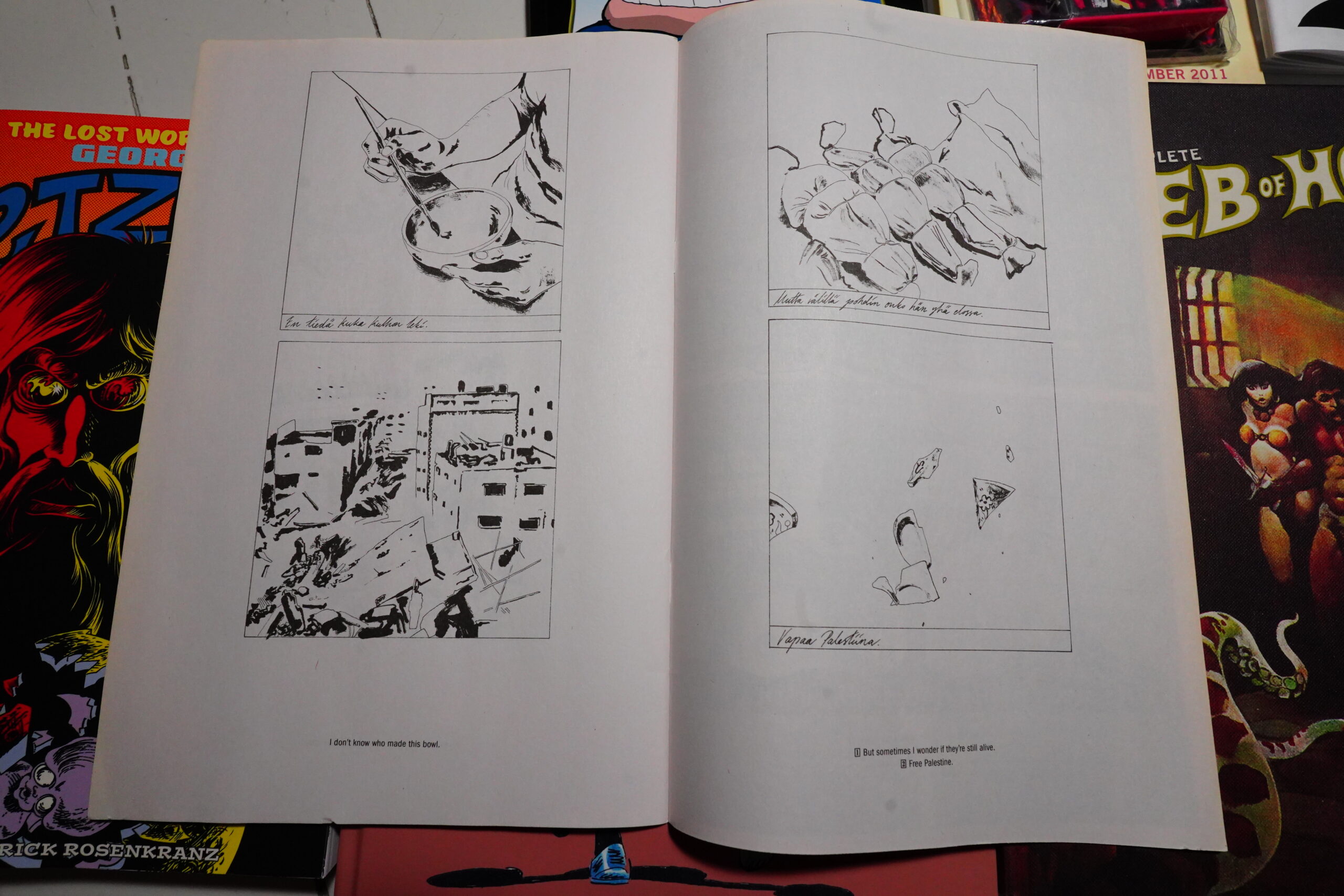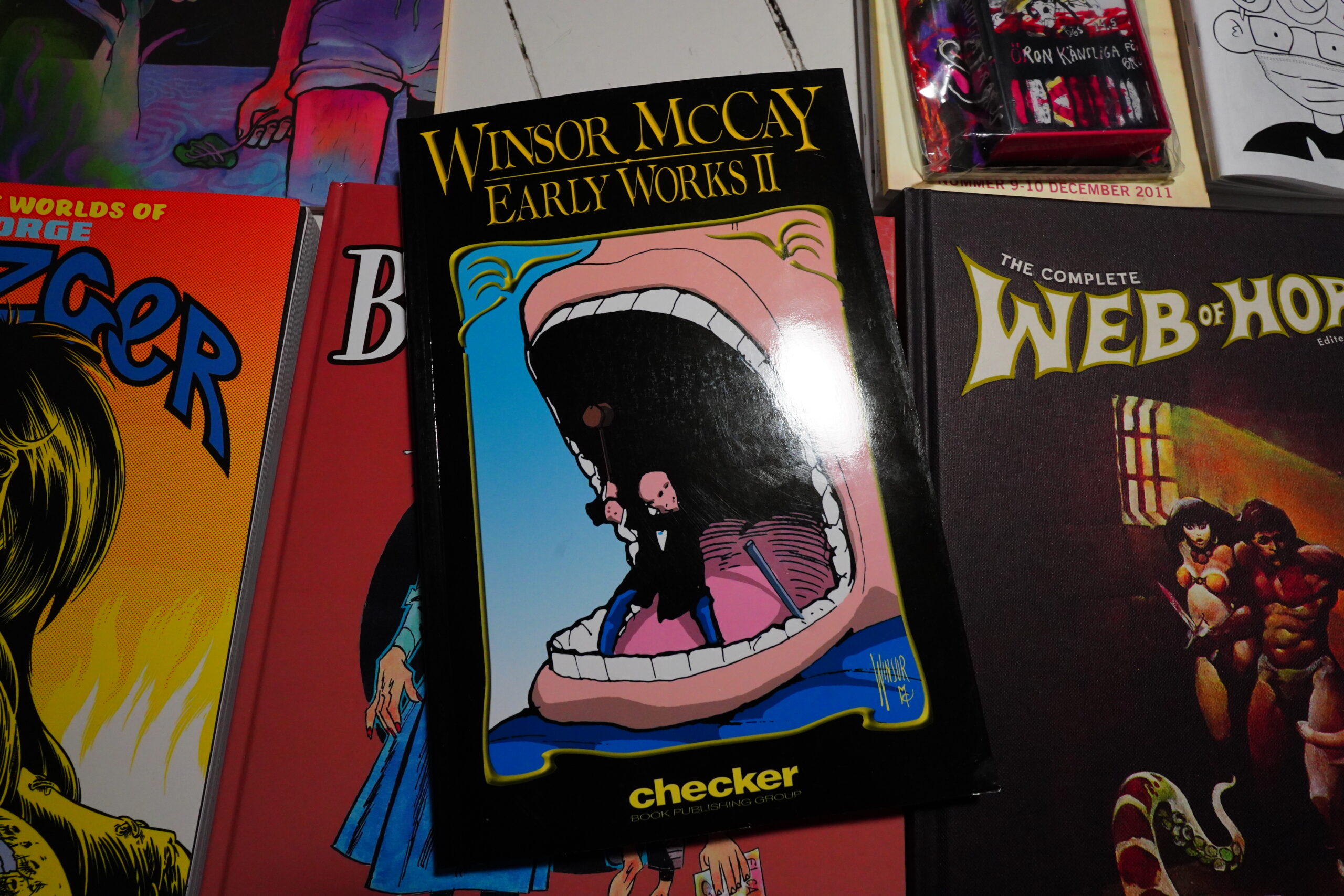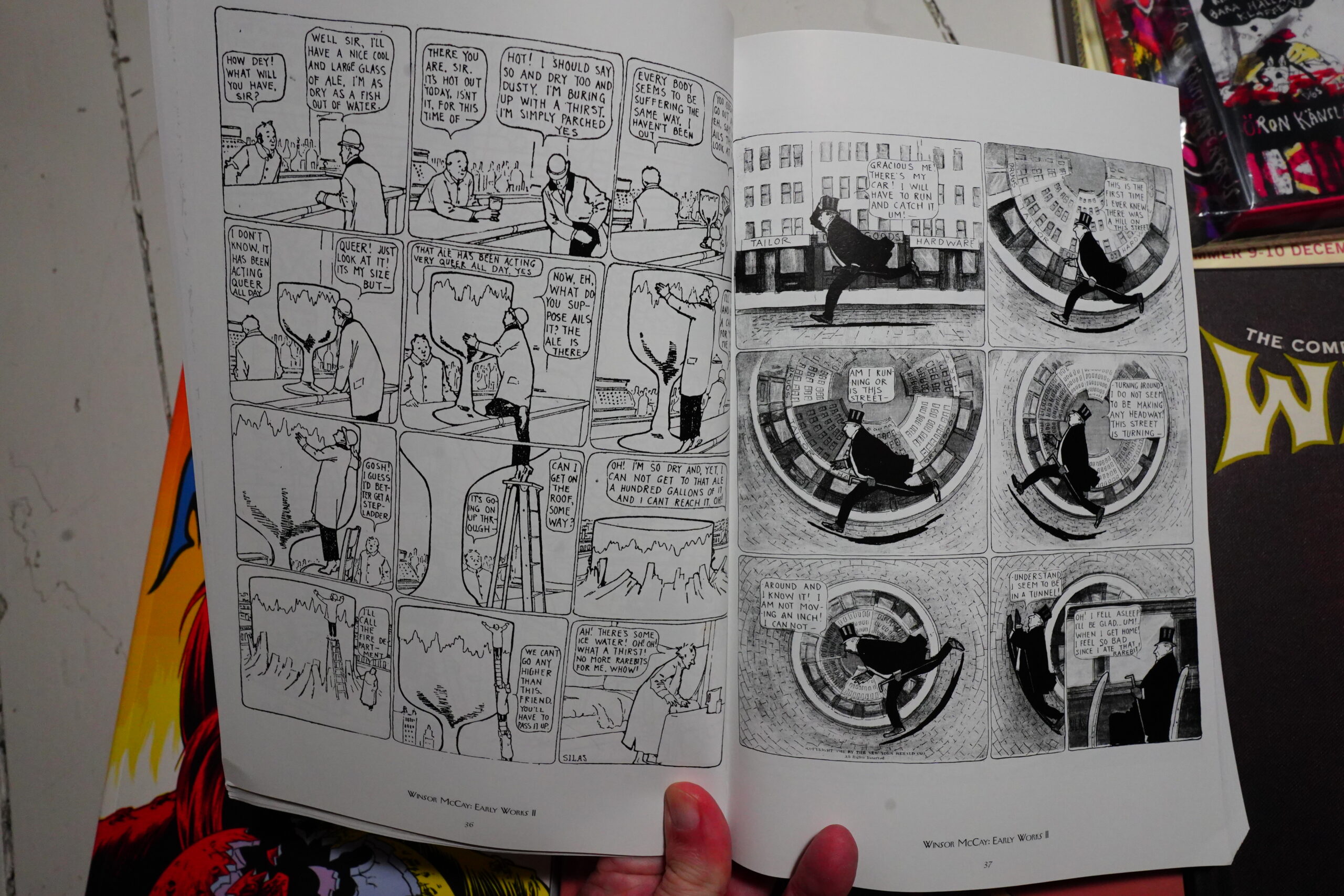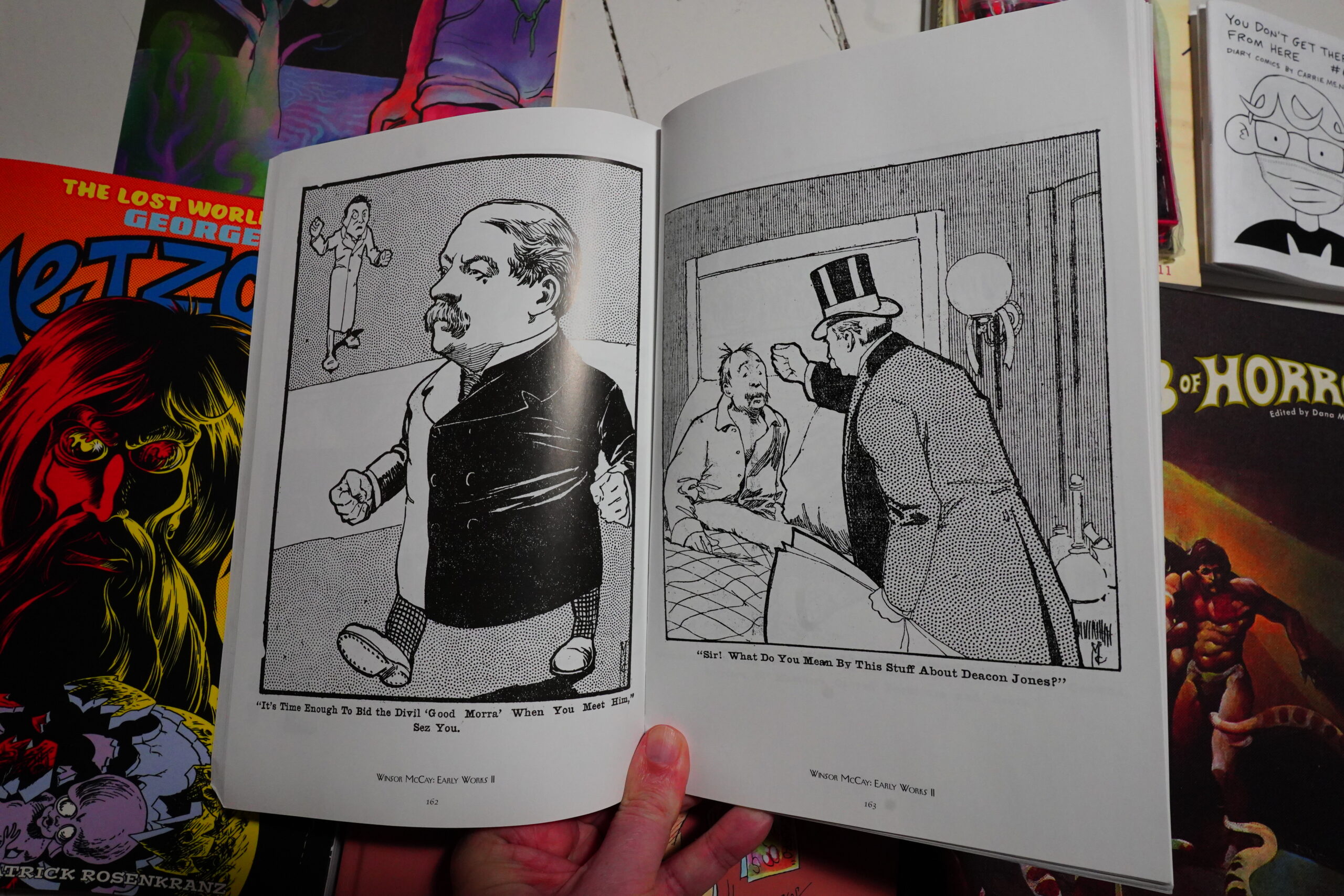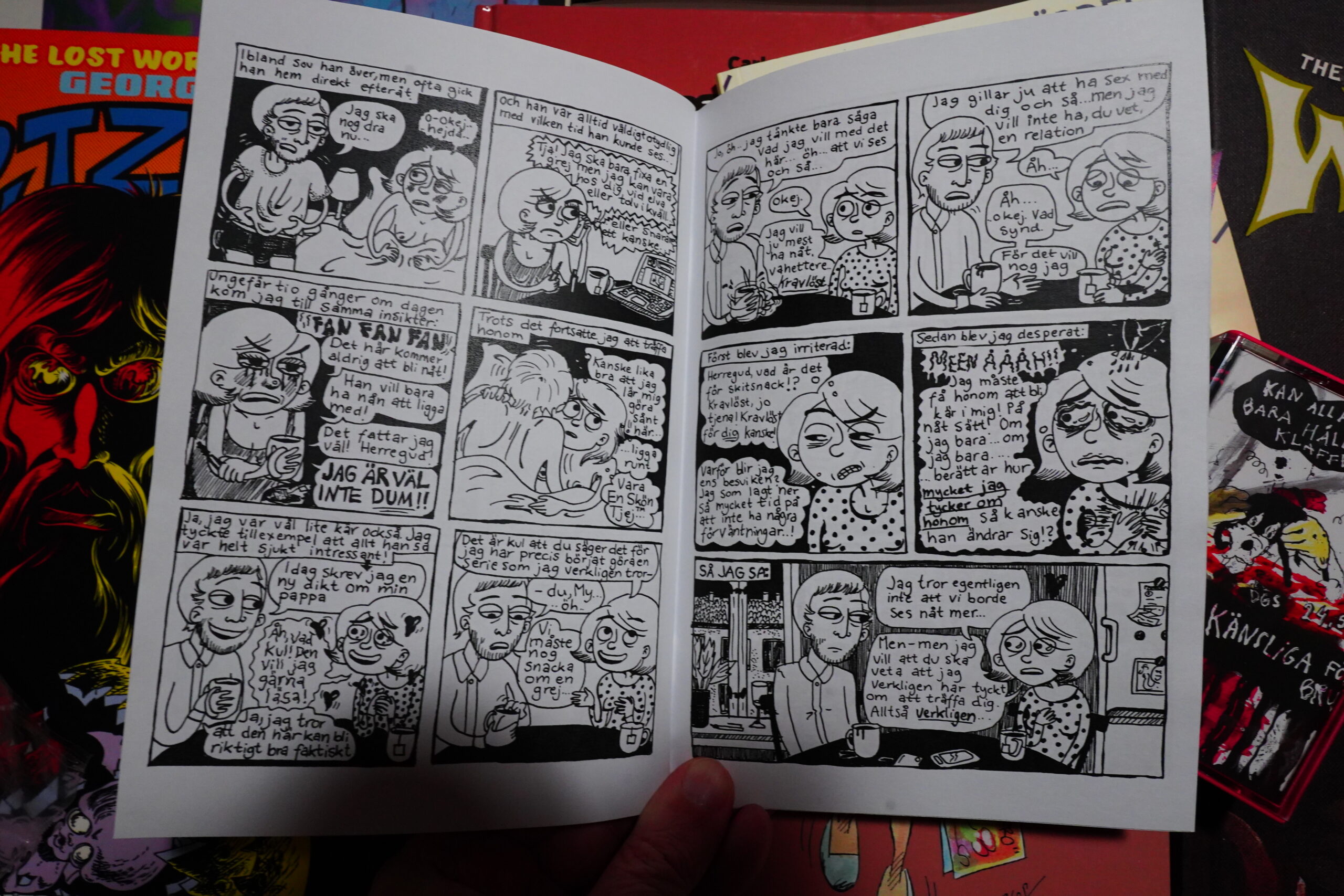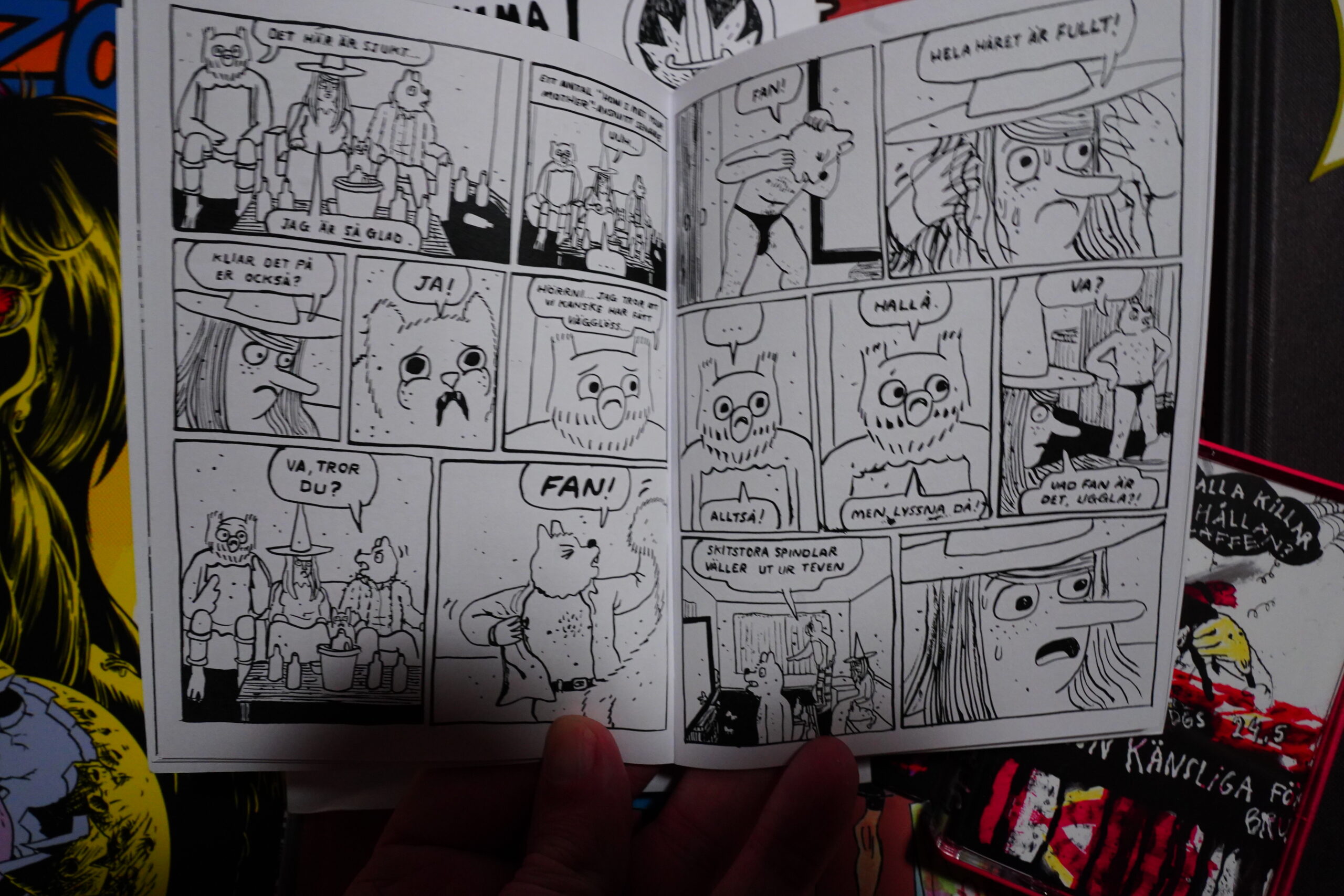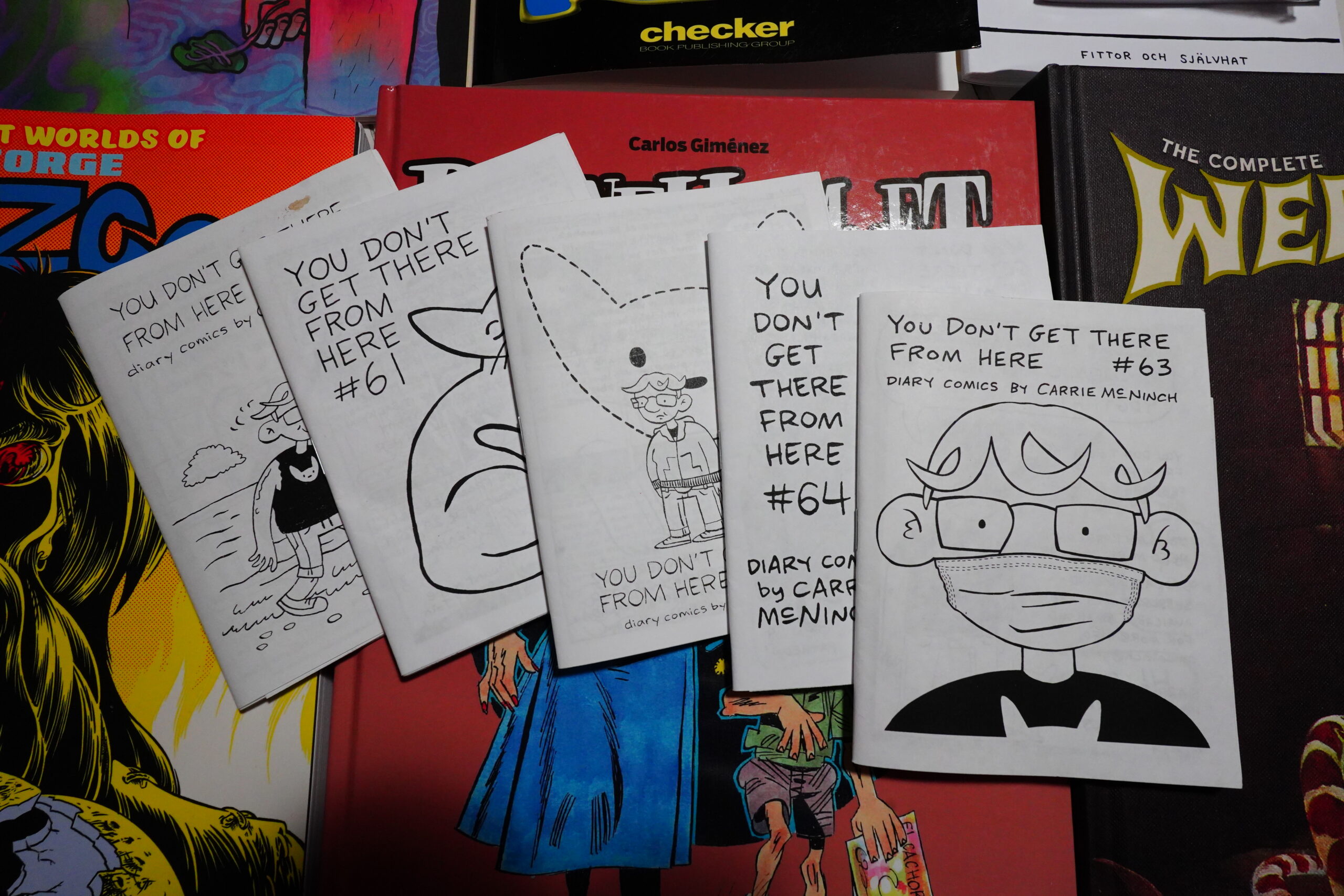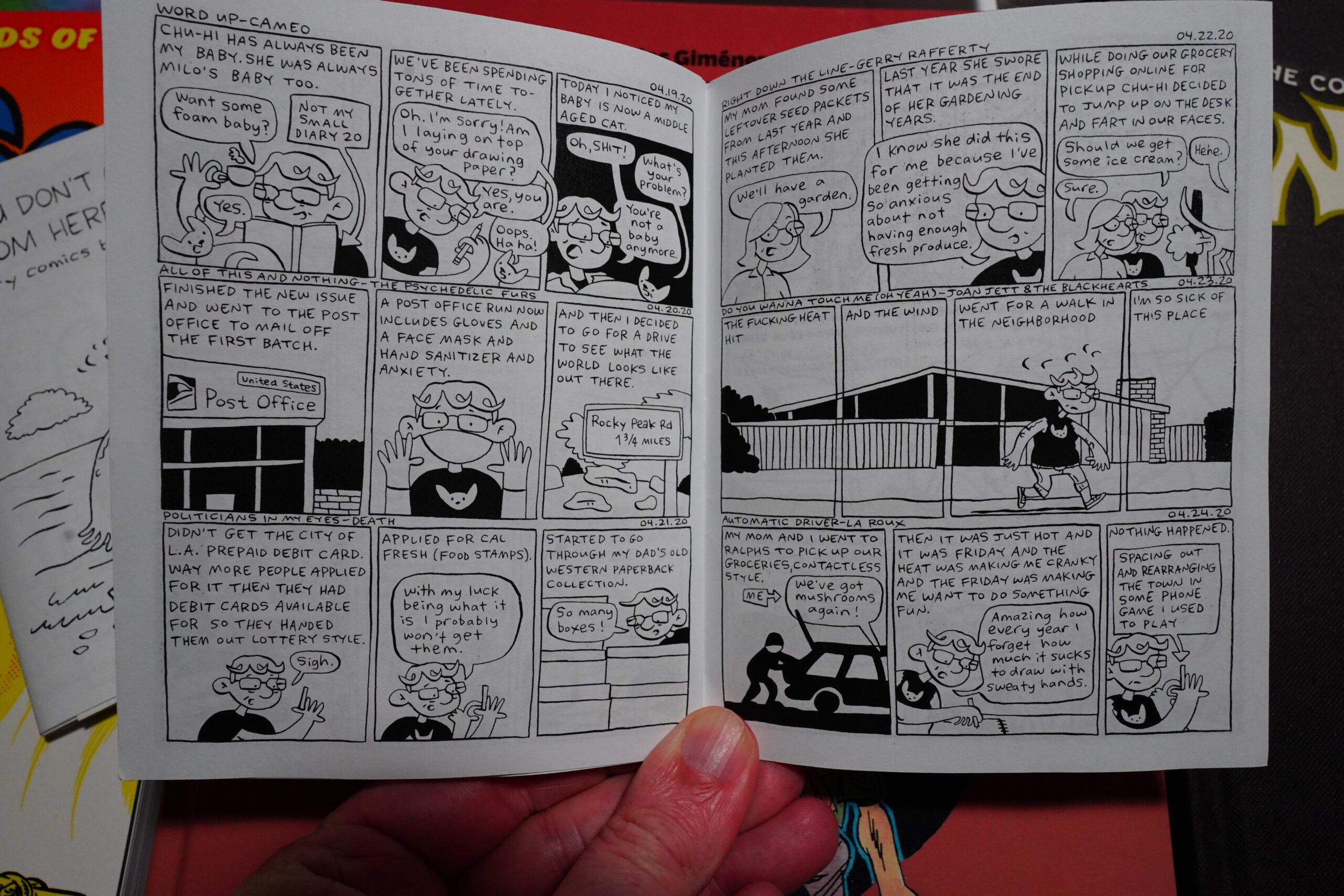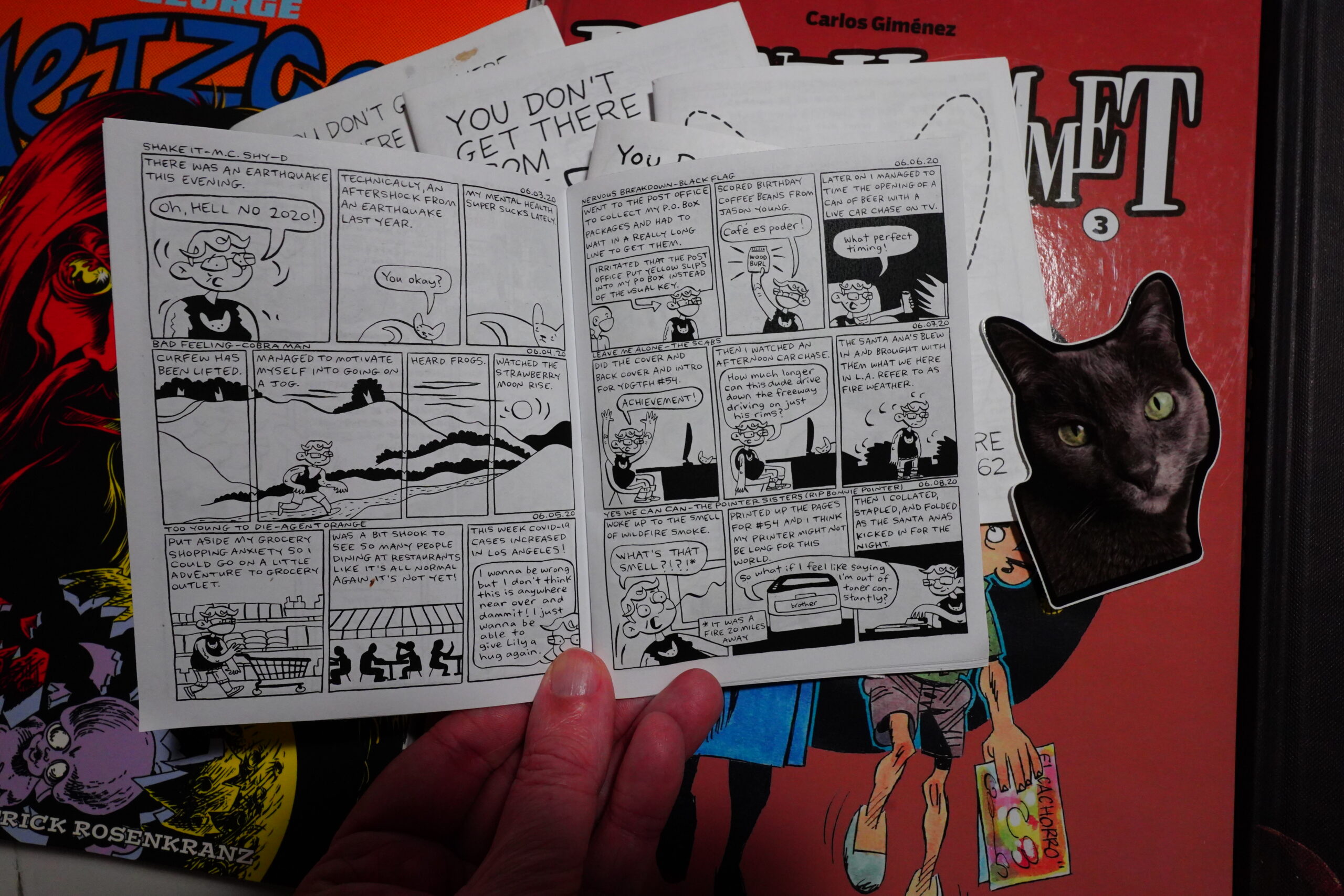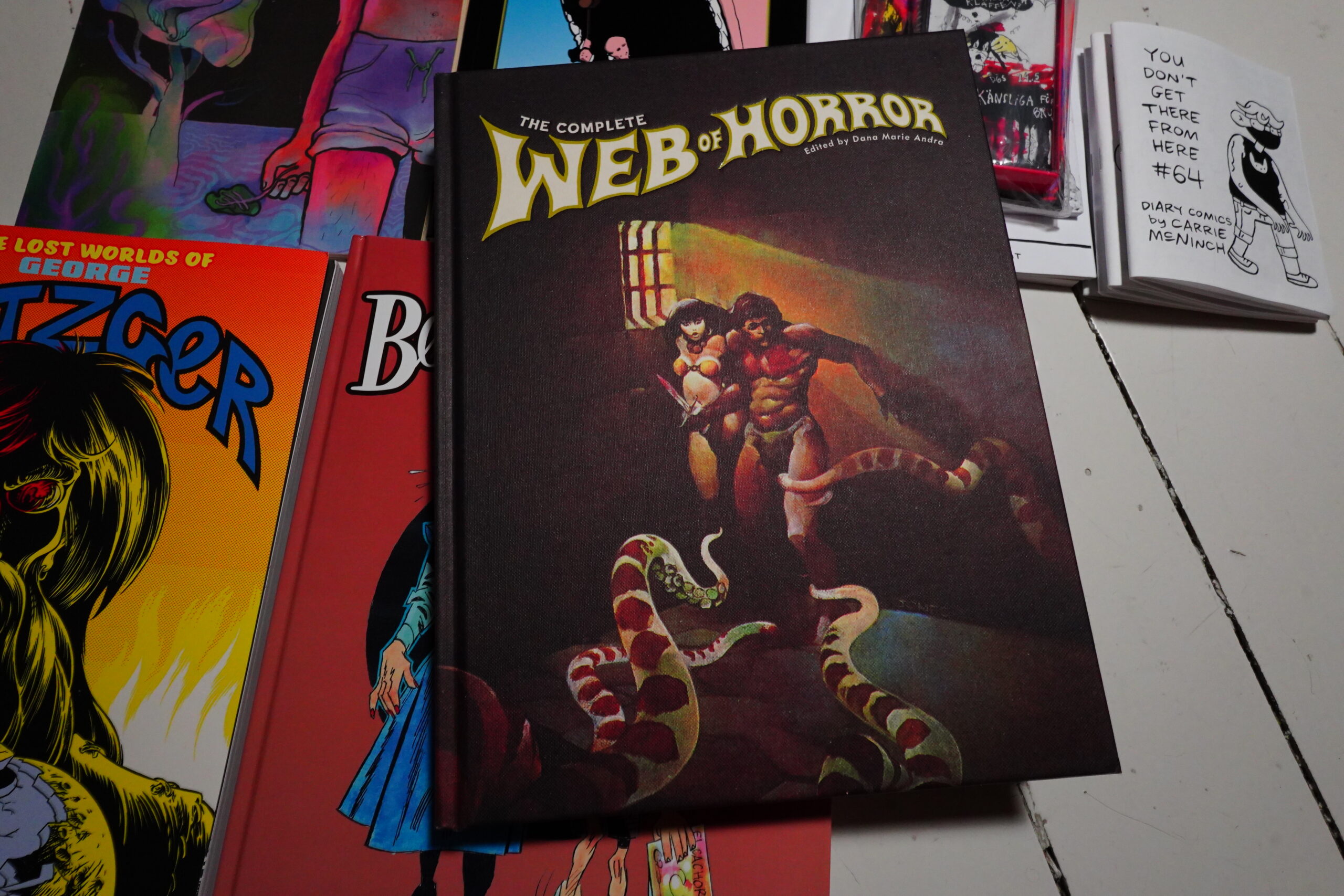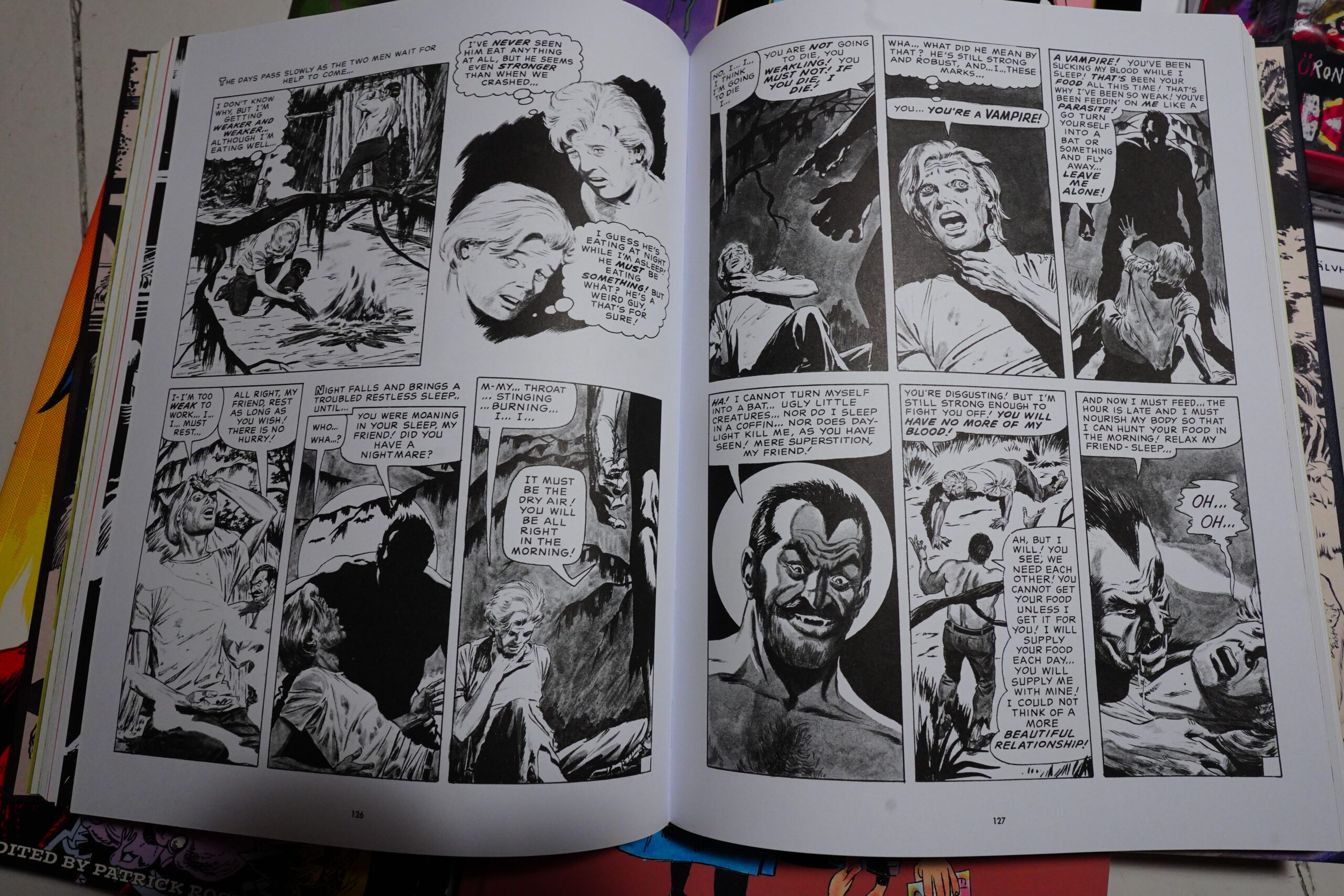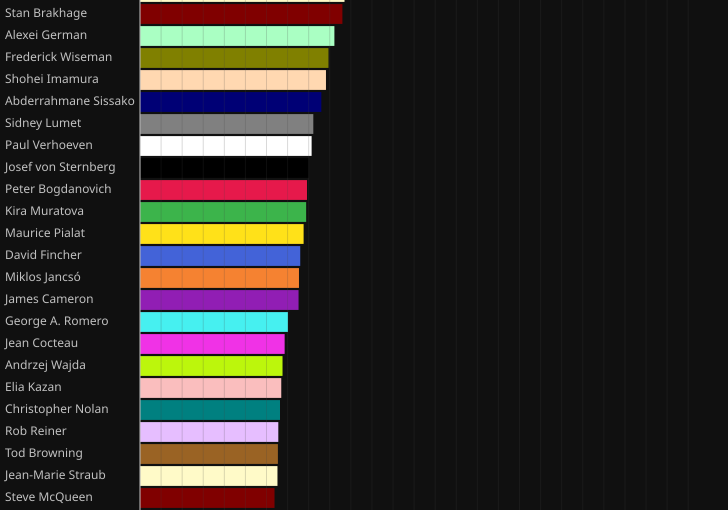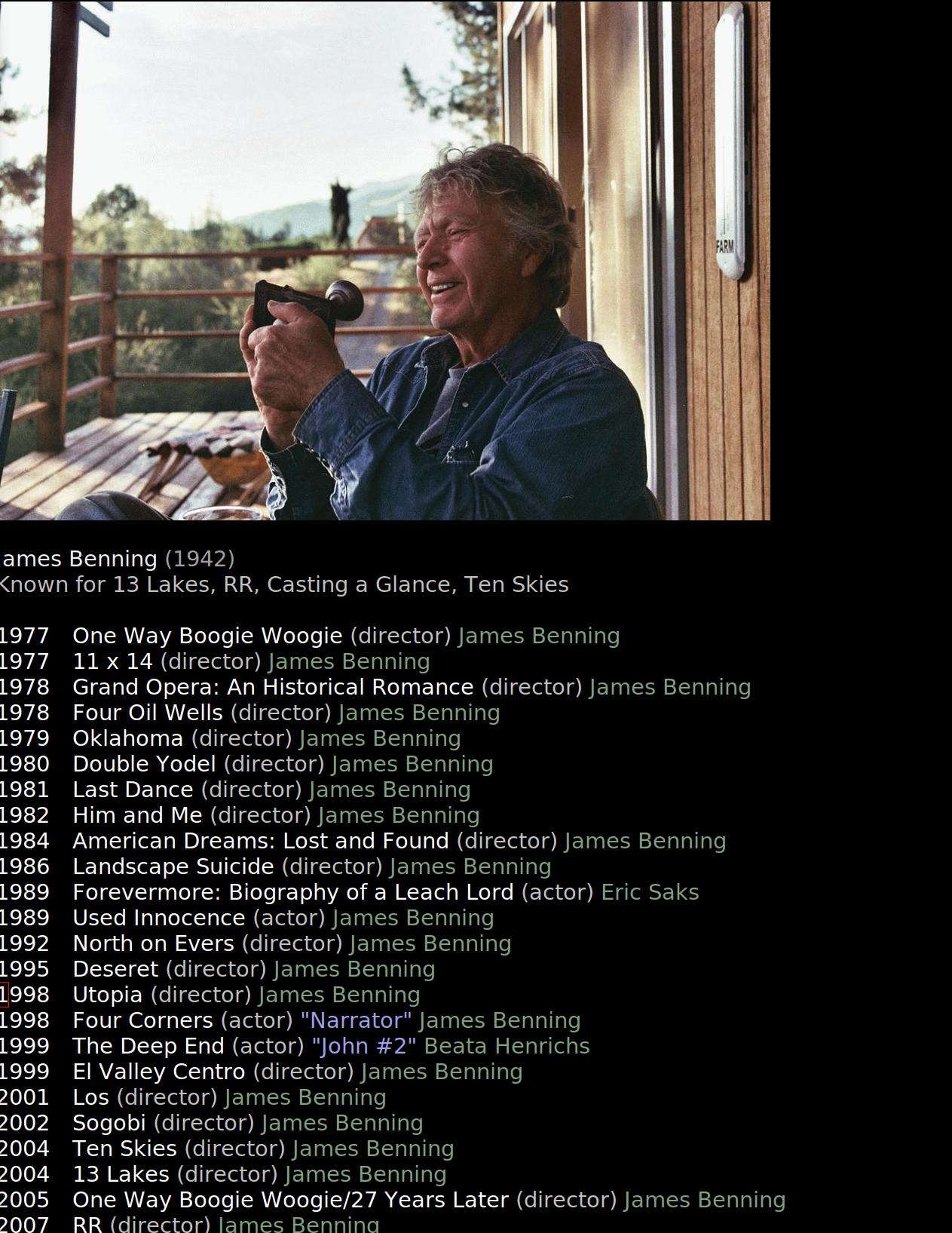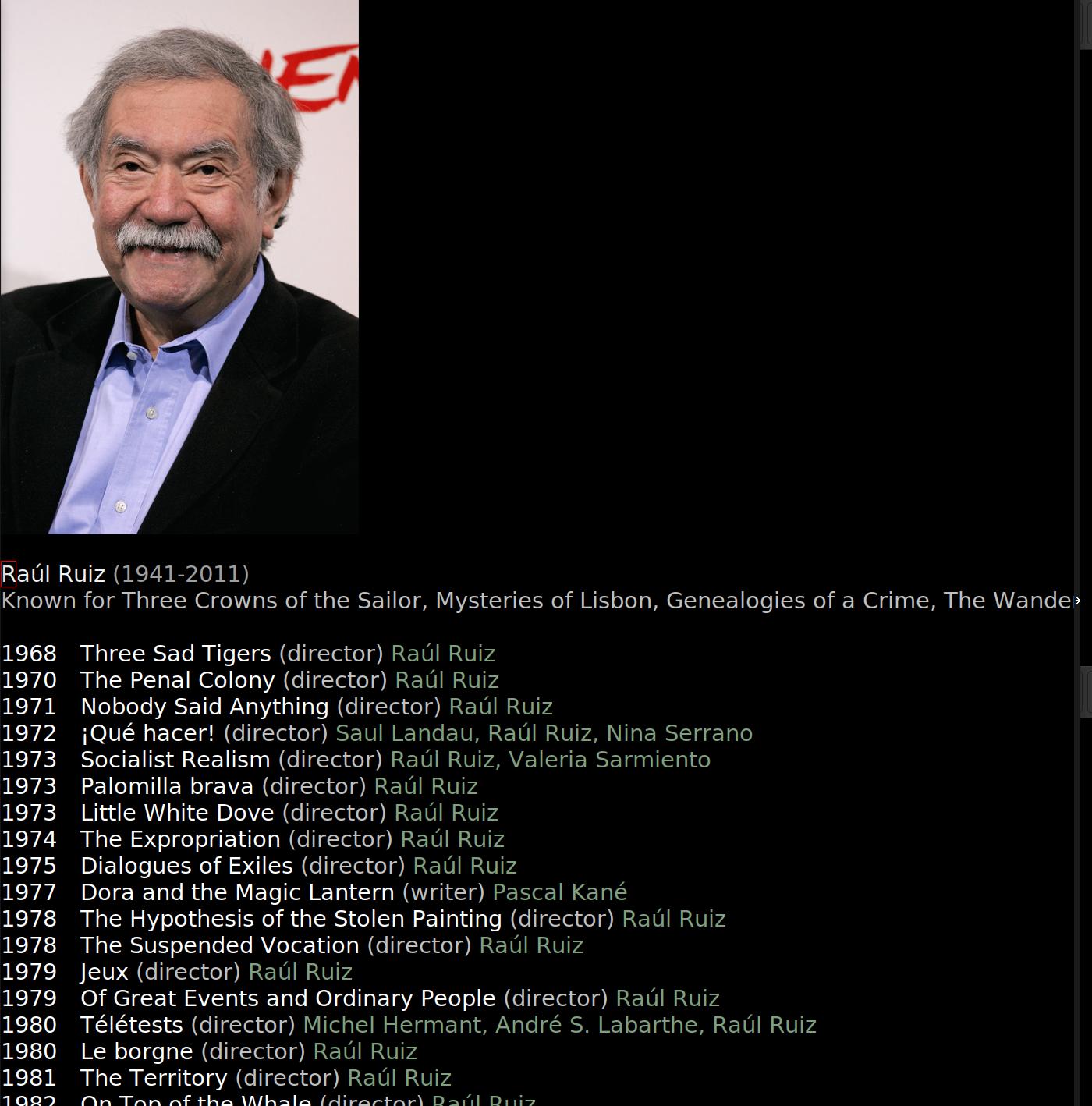July Music
Random Comics
Here’s some comics I’ve read over the past few weeks…
Carlos Giménez has been finishing all his various series over the last few years, and this book collects his final Paracuellos albums.
And while the anger against the gruesome, horrible Spanish homes for children is still present, it’s a lot more mediated than in previous installations.
And in the final instalments he’s more writing about all the things he regrets doing himself, and what an absolute ass he could be as a child. So that’s interesting… but the final, long (100+ pages) album here is a bit of a mess structurally. But still, compelling in bits.
I like that Fantagraphics are doing collections of underground comics artists, because there’s a lot of material that’s not been collected at all, and some of it’s even pretty good.
I’m not sure about this George Metzger book, though. The reproduction is great, but somehow whatever charm these books had doesn’t seem to be present here.
I’ve read much of this material before, and I remember it being better than this? Or perhaps I was just younger.
Artwork’s good, though, and there’s some fun strips.
Yes, it’s another issue of the Finnish anthology Kuti.
It’s really good! But as usual I wished they’d flip the Finnish/English text, because reading the comics while having to move your eyes to the bottom of the page all the time is exhausting.
It’s nice though.
And this one is about Palestine.
I’m not really a big Winsor McCay fan…
… and this collects bits and pieces from his early career.
It’s interesting, but I wasn’t really that into it this time either.
I bought all (?) the issues of Det grymma svärdet, a long-running Swedish anthology/fanzine series the other year, and have been going through them slowly. Almost every issue is in a different format, which is fun.
And some have cassettes and stuff.
In this batch, there really isn’t that much comics material — it’s mostly poetry and prose and stuff, but there’s some comics.
Mostly Swedish things.
But also translations of people like Simon Hanselmann.
Speaking of long-running series, I read the newest You Don’t Get There From Here issues (by Carrie McNinch).
We’re at about a four year interval between what she’s writing about and now, but that works really well especially with this bunch — because this takes place at the start of the Covid pandemic, so we get to re-live how that felt.
It’s a really enjoyable read. And the latest issue comes with a Chu-Hi sticker! I guess you can buy it from here or something…
Web of Horror was a short-lived Warren knock-off, but this collects all three issues, the aborted fourth issues, and another issue’s worth of related comics.
The first couple issues make it pretty clear why this magazine didn’t last long, because the writing is, well, awful. The third issue is actually good, though. And the artwork is nice throughout (Bernie Wrightson, William Kaluta, etc).
The better stories in here were reprinted by Eclipse Comics back in the 80s, so I’ve read those bits already.
But still, if you’re a fan of these artists — sure, pick up a copy. But it’s not like this is a lost masterpiece or anything, like the editorial material here seems to exhort the reader into believing…
OK, that’s it. Go about your business.
Film Directors and Consensus
Yesterday I mused (data-scientifically) on whether certain 80s arthouse directors didn’t place on the Sight & Sound 2022 Poll because there just wasn’t much of a consensus yet about which ones of their movies were the best.
And the answer seemed to be “not really”.
But today I started wondering whether there really are directors where that’s a major thing — that is, are there any directors that would have placed highly if everybody that voted for a director’s films voted for the same one from that director’s oeuvre.
Tada!
So this chart plots how much further up the chart a director would be if the poll was computed cumulatively per director instead of per film. And wow, that was unexpected!
The “highest scorer” (or most unlucky director) is somebody named James Benning, who would have placed 1300 places higher up than any of his movies did. And that’s a name I don’t recognise at all! He has 14 (!) movies that somebody have voted for, but none of them received more than two votes.
I’m not familiar with him at all, and he seems to be doing mostly documentaries? Which explains me not being familiar with his work.
Next up is Raúl Ruiz, who would have jumped 800 places. He has 11 movies that received votes, but none more than 4 votes.
He’s from Chile, and I don’t think I’ve seen any of his movies? But he sounds interesting… I should fix that.
Third place is Jim Jarmusch, who would also skip ahead 800 places. He has 6 movies that people have voted for, and the one with the most votes is Stranger than Paradise with four votes.
We also see Wes Anderson (who would advance 640 places), John Houston (543 places) and Clint Eastwood (530 places), and so on. So, yes, there’s definitely a too-many-memorable-movies effect that’s going on.
Conversely, if we ranked directors by total votes, who would sink the most? Yeah, it’s directors that have just one well known movie (like Charles Laughton), or directors where people have pretty much decided on which one is their masterpiece (like Jacques Tati and Playtime).
Anyway. The Sight & Sound poll is about the “best movies”, not about favourite directors… but I thought this was moderately interesting anyway.



)



)








)
)
)
)


)
)


)




